We were to meet her at the city gate at 8:50 am. Outside the gate, the sun was already very warm and the background hum and tooting of car horns filled the air. Just inside the gate, however, the air was cooler, the traffic more distant and the air echoed to the sound of footsteps and bicycle tyres squeaking on the cobbles beneath them, stones made shiny by generations of use. We bought coffee at a nearby cafe and stood watching people pass by: workmen in dusty jeans and ‘T’ shirts, ready to continue their renovations within the city walls, impeccably stylish and elegant women strolling to the office, high-heeled and straight-backed, chatting on phones and sipping coffee. A beggar woman arrived and sat beneath the ancient gate, no doubt like countless poor had done before her. She was immediately berated, or so it appeared, by a scruffy, ruddy-faced man with a bicycle, his yellowing, grey hair unkempt and uncared for. The woman looked through him as if into the distance and his words simply hung in the air, unable to land and, with nowhere to go, dissipated into the heat of the morning.
A middle-aged woman wearing a red dress and sensible shoes, a lanyard around her neck, entered through the gate. She was tapping at her phone when she looked up and met our gaze with official acknowledgement. Our tour guide had arrived.
For the next hour and a half, we were shown around the streets of Lecce and given just enough information to make us feel that we knew the place. This was a free tour (apart from the inevitable and very worthwhile tip) but there are plenty of other tours available and the cost varies considerably. See getyourguide.co.uk.
Without our tour guide, we would not have noticed that many of the buildings had huge doors within which another, smaller door could be found.
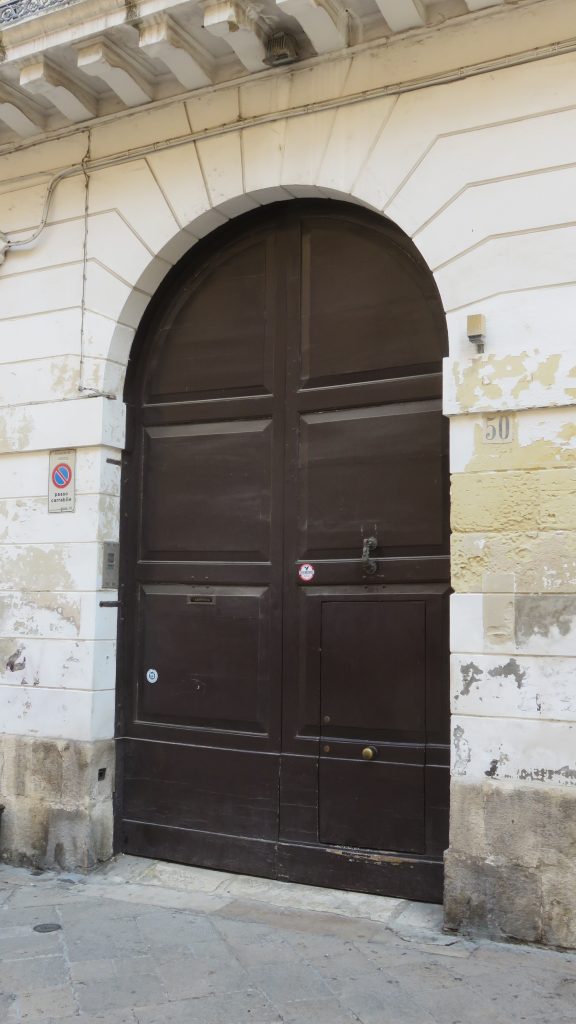
In this photo, you may be able to see the little door in the bottom right of the larger door, with a door knocker above it. Anyone standing in front of the door can see that the knocker is very high up and you have to stretch up to reach it. This house would have been of some value and importance and any nobleman coming to the house would certainly have arrived on a horse. The door knocker is placed at just the right height for the nobleman to use it while in the saddle. The larger door would have opened to receive him. Everyone of lower importance would have to use the smaller door.
While visiting one of the many churches in the city we were admiring what appeared to be a marble figure of Christ, set behind glass and painted in bright colours. Turns out that it was in fact made out of papier–maché, which made it so much more impressive. The use of papier-maché was common in the city and model makers can still be found here, creating little papier-maché figures like those shown in the photo below.
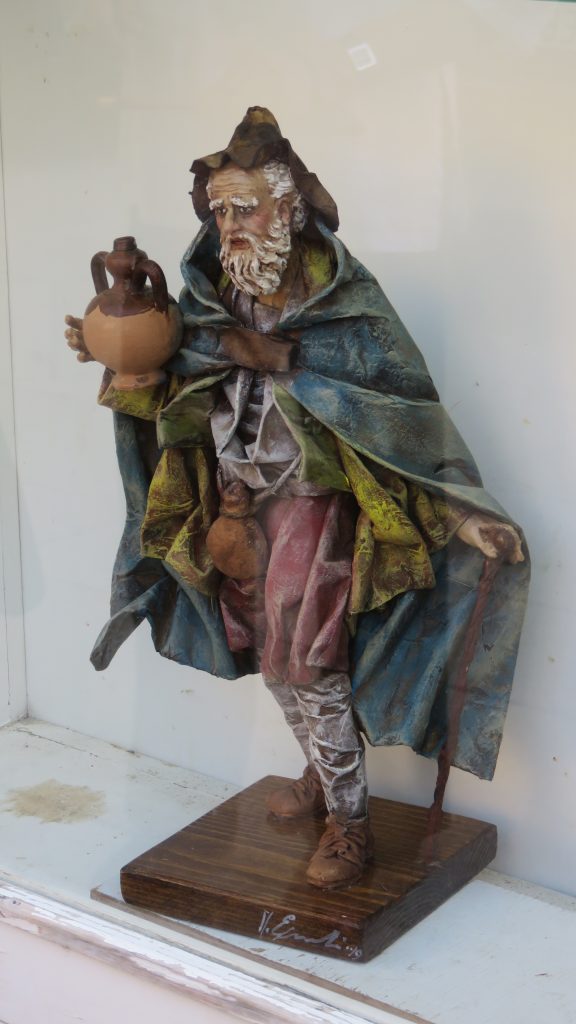
In the following photo, you can see the process involved. The figure is constructed in straw and then covered in paper. Heads, hands and feet are made separately from terracotta as these are more intricate.
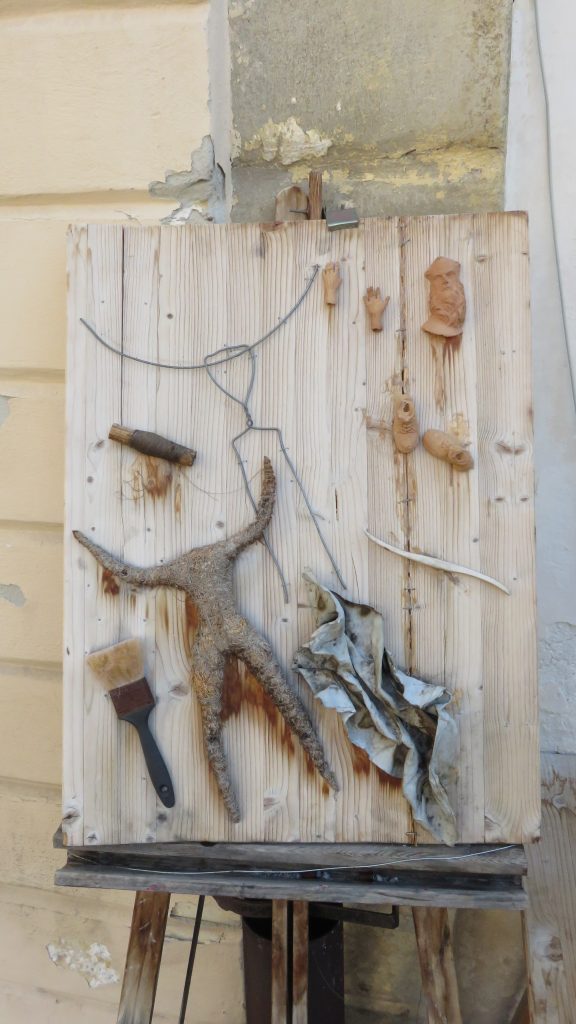
The result is quite amazing. Our guide estimated that a figure of this kind would take about a week to create.
The main Roman amphitheatre, in the Piazza Sant’ Oronzo here in Lecce is a real focal point in the city and has only been partially excavated. At least half of it has been deliberately left below ground, under other buildings in fact.
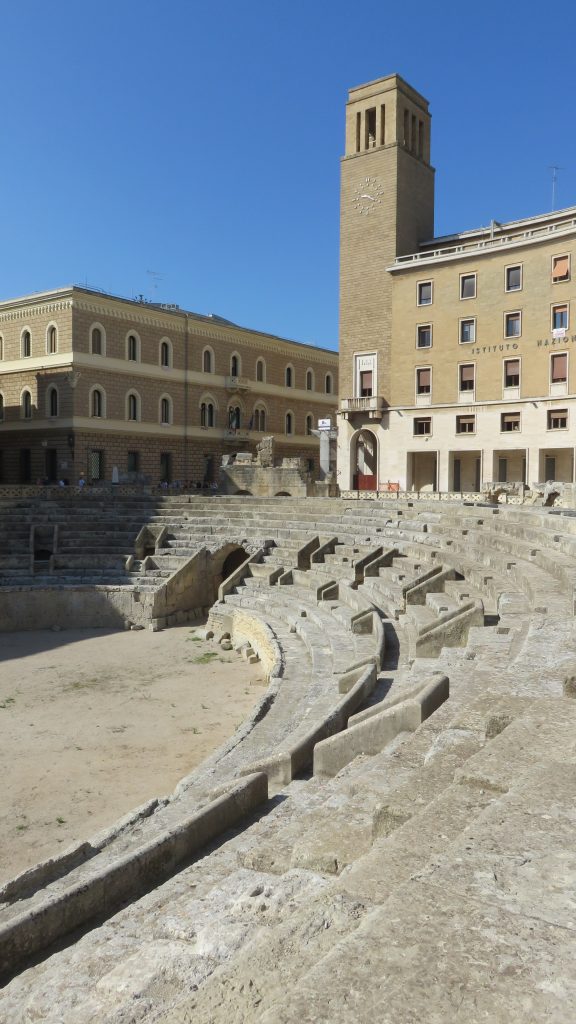
We were told that it would have been as high as the clock face in the rear of the photo. Here, animals would have been used for sport, pitting elephants against lions for the pleasure of the crowds – quite normal in Roman times but unthinkable today.
We were shown an artist’s impression of the Piazza Sant’ Oronzo in its glory days, when amazing buildings surrounded the square. This was before Mussolini demolished them and built the ugly monstrosities you can see today.
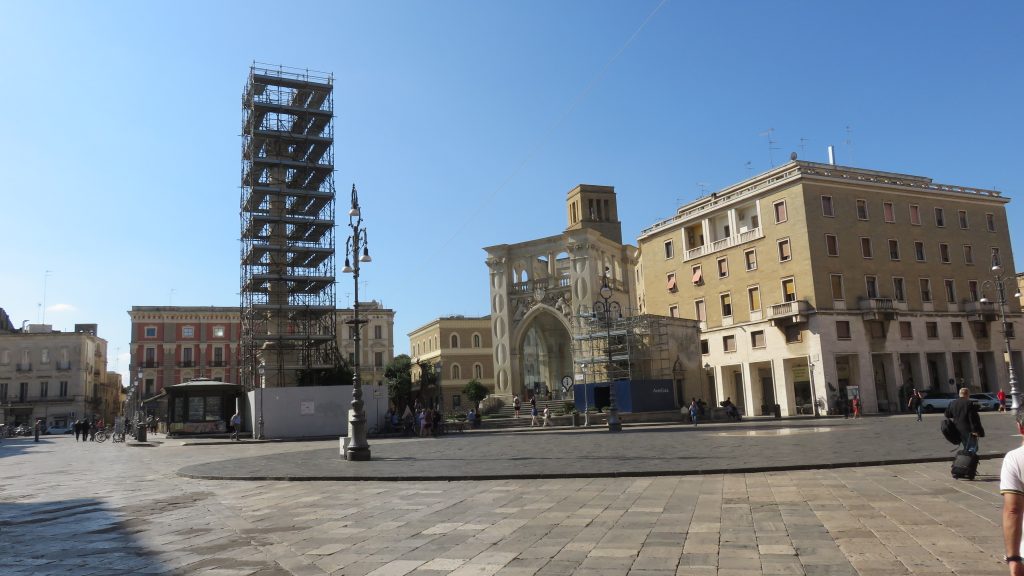
Lecce is filled with churches – one on every corner it seems – but the most beautiful, in my humble opinion, is the Basilica di Santa Croce.
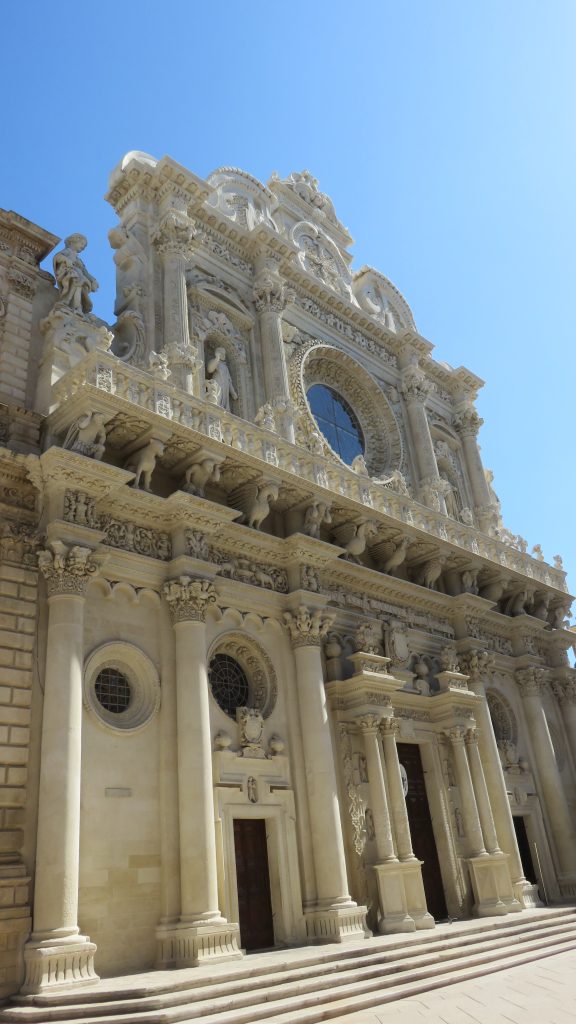
The workmanship is simply breathtaking and the church deserves to be set apart on a hill of its own instead of tucked away on a street amongst cafes and ice cream parlours.
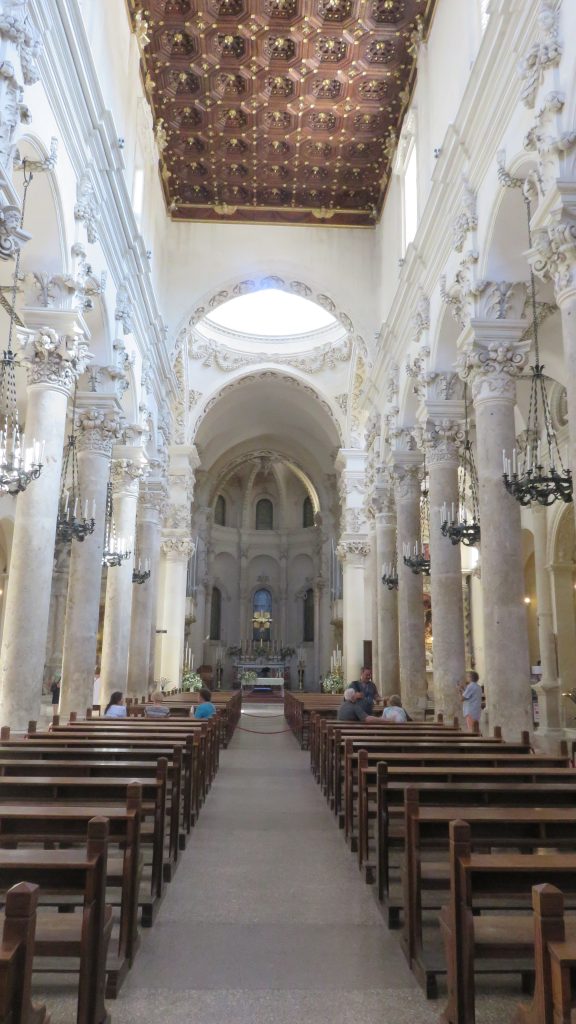
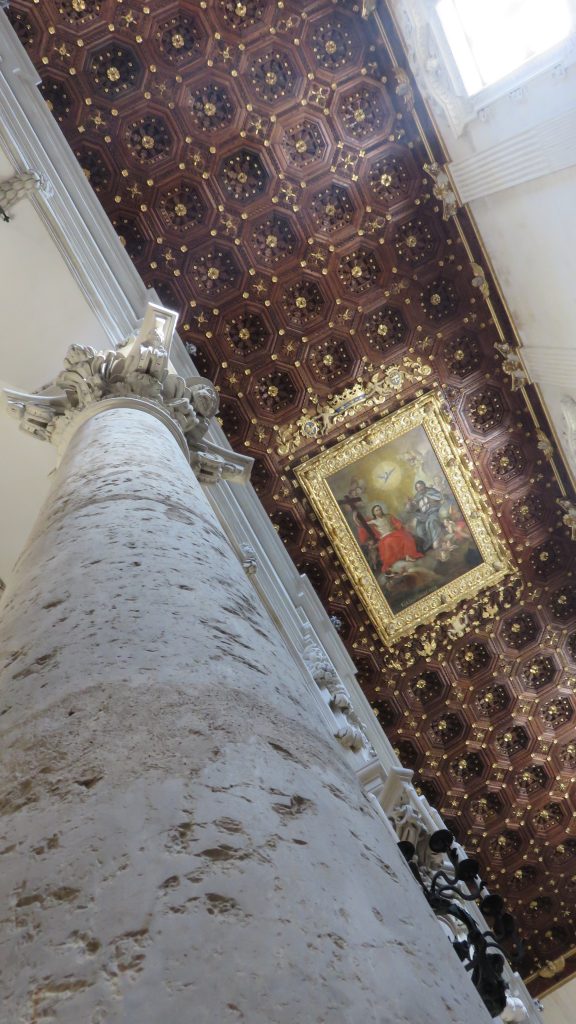
Later, we stopped for coffee and snacks in a leafy square and rested our legs. We had Pasticciotto (shown below), which is a pastry filled with sweet cream. It looks like a pie and tastes like a cake – bellissimo!
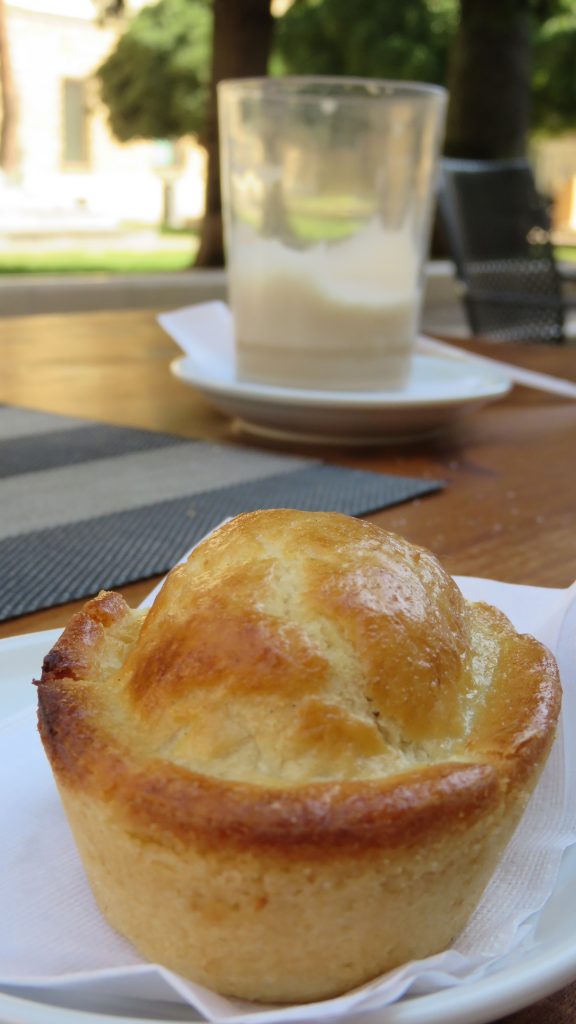
In the evening, we visited the most fantastic 1920’s style bar called Saloon Keeper and we highly recommend it.

Its tiny rooms are filled with old leather furniture and packed with 1920’s memorabilia. The exhausting drinks menu is spellbinding and it took ages to choose from it. Once our drinks were chosen, however, we watched with curiosity as the barman created our cocktails with intricate intensity and care, ensuring every little detail was taken care of. Each drink was created from scratch, each ice cube placed, one by one, in each glass as if arranging flowers and every part of each glass was wiped clean of wet finger marks before being paraded towards us by a very smiley waitress. Nibbles were included. We sat for ages and allowed cool jazz to wash over us in the dark, candle-lit room.
A word of warning for those with delicate sensibilities – if you visit the washroom, be prepared to be confronted with explicit (and I mean explicit) early 1900’s pornographic photographs displayed on the walls of the tiny room. I was in there for ages, purely to appreciate the artistry and photographic creativity, of course. When I came out, I insisted that Rachel take a look, whether needing the loo or not. This establishment is an absolute must if you want something quirky and different – and I don’t mean the porn!

Another brilliant piece Andrew! I zoomed in on the photos of the Basilica di Santa Croce…. Wow!! The detailed architecture is beyond impressive….. Now eagerly awaiting your next update ?.